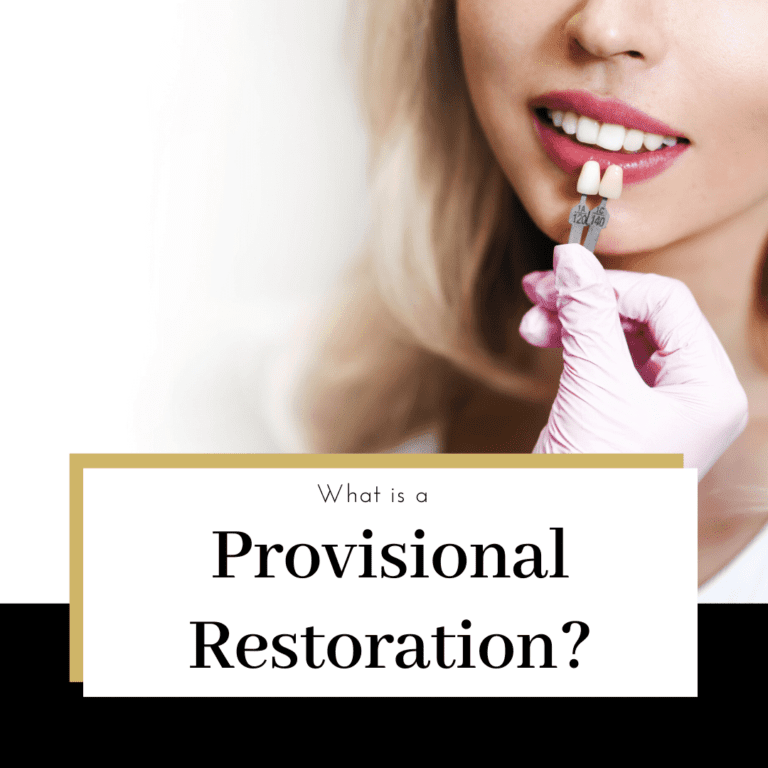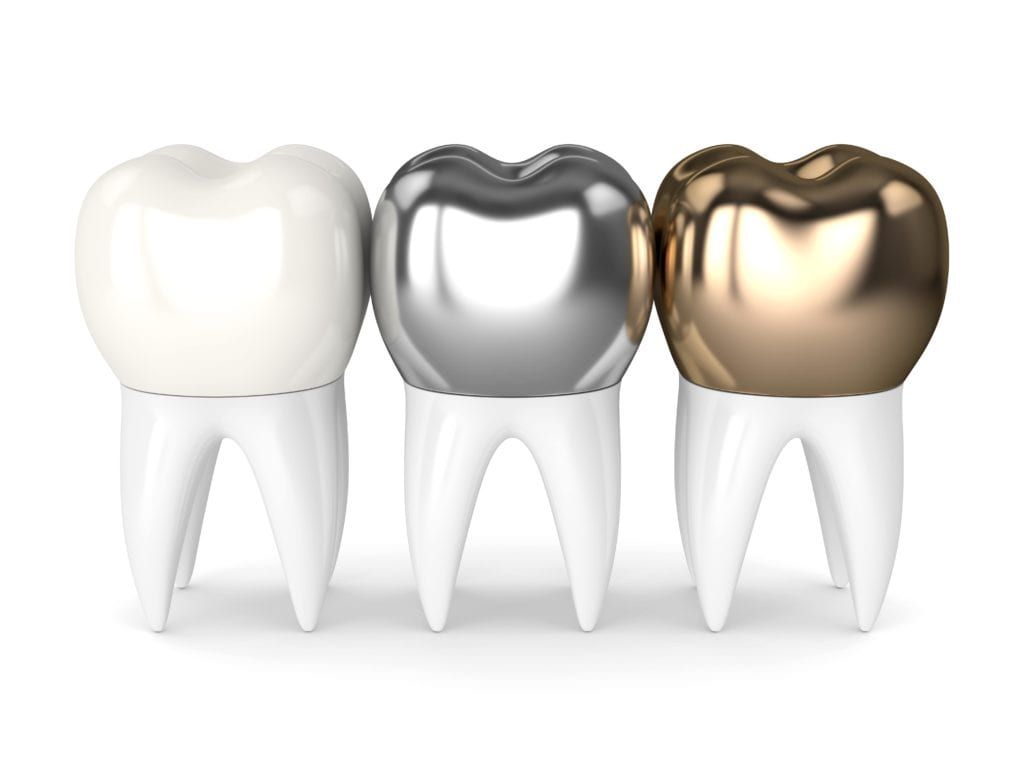What is a Provisional Restoration?

Nowadays, dental restorations are designed to be more visually appealing than they were in the past. One main reason this is possible is because of professional dental laboratories that custom fabricate individual restorations. This means that ultimately your restoration is made for you and only you, will fit perfectly, and will look natural by blending with your smile.
However, there is one tiny downside to having a dental lab fabricate your restoration. Simply that it takes time and you will need to wait. This is why two dental appointments are often needed to place restorations. The first appointment prepares the teeth and obtains the necessary information for the dental lab, while the next appointment is used to check the fit of the restoration before permanently cementing it in place.
In between this first and second appointment, there is about a 1-2 week span of waiting while the dental lab diligently works on your final restoration. Since restorations require some extent of enamel modification, however, what are you supposed to do in the meantime to protect your tooth? Luckily, your dentist has already thought of this and they have a plan in place.
After preparing your tooth for the restoration, your dentist will use what is formally known as a provisional restoration. Provisional restorations are simply temporary restorations that are placed in the same area where the permanent restoration will eventually go. This way, they can protect the tooth while the final restoration is still being fabricated. Additionally, they are used to maintain adequate space for the restoration, as well as contact points so the final restoration can be properly placed.
Because provisional restorations are temporary, however, they are not equal in any way to permanent restorations. This means that they are far more fragile, less attractive, and may not have the best fit. Since the goal is to only have them remain in place for two weeks at the most, they are simply designed to last for those two weeks.

When you have a provisional restoration, most dentists will recommend that you chew on the opposite side of your mouth to prevent the temporary from becoming loose or falling off completely. Although there are adhesives available to help hold a temporary restoration in place, the best solution is simply to avoid it falling off in the first place.
In some cases, provisional restorations can also be used as a way to “test” out a particular type of restoration to determine if it will work for you. In these cases, the restoration will likely be fabricated in a dental lab. The end result will be higher in quality than a 2 week temporary, but not as high in quality as a permanent restoration.
There are a few different types of provisional restorations available. Any indirect restoration, or one that must be completed by a dental lab, will require the use of a provisional restoration. The one exception is if a dental office has their own CAD/CAM machine which can produce restorations without the use of a dental lab. Indirect restorations that use provisional restorations before placing the permanent restoration include crowns, bridges, inlays, onlays, and veneers. Therefore, if you are having one of these restorative procedures done, plan on wearing a temporary restoration before having your final one placed.
Overall provisional restorations are temporary restorations that are put in place for about 1-2 weeks will the permanent crowns, bridges, inlays, onlays, or veneers are fabricated by a dental lab. During this time, provisional restorations protect the tooth and maintain the space and contact points for the final restoration. In this way, they allow for the placement of high quality dental restorations individually fabricated by professional dental labs.

Dr. John Batlle attended the UF College of Dentistry where he received his Doctor of Dental Medicine degree in 1983. After graduating, he worked for the State of Florida and received his commission in the Navy Reserve Dental Corps. He was deployed to Guantanamo Bay, Cuba in 2002 where he served as the dentist for Detainee Operations and Navy Hospital GTMO. He recently retired from the U.S. Navy Reserve after 26 years of service.

